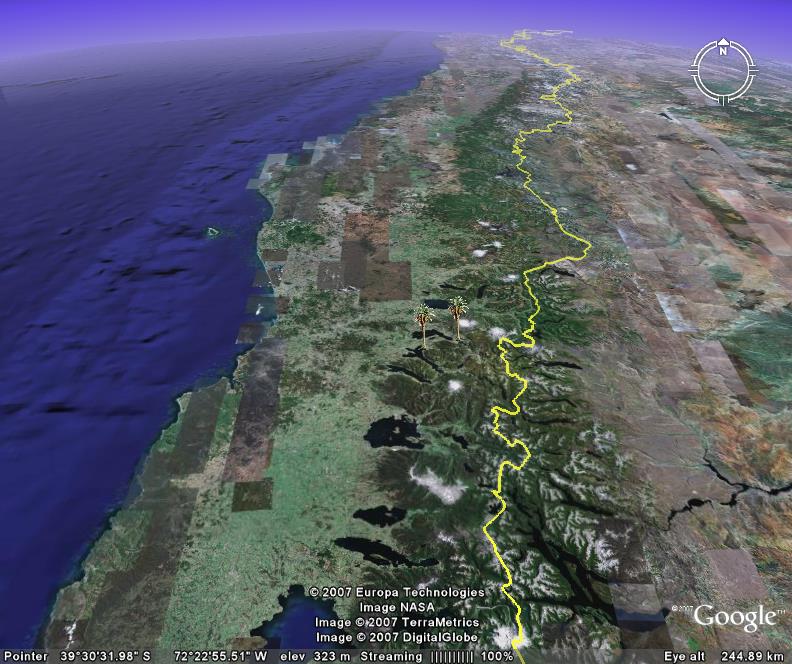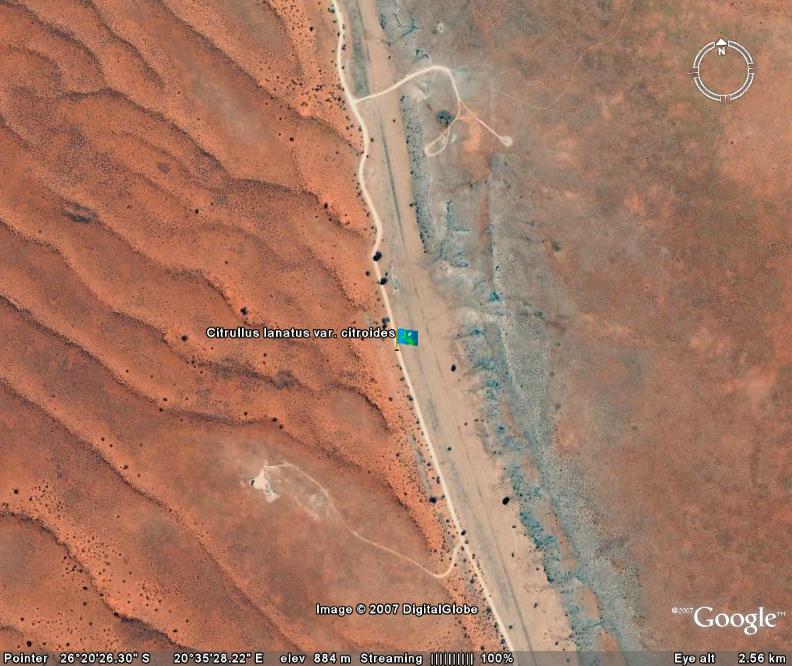The wonders of livestock breeding.
The benefits of sharing
A post in Google Earth Blog alerted me to the great efforts by staff and students at the Faculty of Agronomy and Forest Engineering at the Pontificia Universidad Catolica de Chile to geo-tag the specimens in their herbarium. They’ve produced a Google Earth kml file to show hundreds of collecting locations throughout the country. Below are the localities of Persea lingue, a congener of the avocado, though I’m not sure how closely related they are. It’s threatened, according to IUCN, and indeed there’s only a couple of specimens in the herbarium, quite near each other:
Preserving rare breeds at the grassroots level
Because there is only modest interest by most national governments in the preservation of rare farm animal breeds, much of this work is done by non-governmental organizations. 1 These are often operated on shoestring budgets and frequently require some pretty imaginative financial acrobatics to exist. Below is a list of some of these organizations. I realize it is likely to be incomplete — lists like this always are — but I hope it’s at least a fair representation of the types of organizations that are involved in this effort. Some are simply umbrella organizations of breeders of specific breeds, while others have actual facilities that produce animals. Some focus on one breed, while others have a barnyard full of different critters.
I can personally attest to the effectiveness of the American Livestock Breeds Conservancy, having been a member a while back, but I don’t really want to provide any specific endorsements here. If you think rare breed preservation is a worthwhile endeavor (and who wouldn’t), check out these websites, and if you find an organization that appeals to you, join and support it. If, on the other hand, I have omitted your favorite organization, just post a comment with a link and I will publish a more complete list in the future.
Continue reading “Preserving rare breeds at the grassroots level”
Watermelon: Out of Africa
Summer here in Rome tastes of watermelon. So, as the temperature outside hit the upper 30s today, it was great to sit in air-conditioned splendour in the office this lunchtime, eat a slice of cocomero and read a paper on the origin of the crop in the latest GRACE, which has just come out. Fenny Dane and Jiarong Liu at Auburn have looked in detail at chloroplast DNA from material collected all over Africa in an effort to reconstruct the history of both the familiar fruit (Citrullus lanatus var. lanatus) and the related tsanna or citron melon, which is a different botanical variety (var. citroides) of the same species. It turns out that the split of var. lanatus and var. citroides from a common ancestor (C. ecirrhosus, maybe) is ancient. The citron melon split off independently in the area of Swaziland and South Africa, while the wild precursor of the cultivated watermelon has its roots, as it were, on the other side of the continent, in Namibia. The picture below (courtesy of GBIF) shows why watermelon does ok in the Italian summer heat. Its natural habitat is pretty much desert (the record is for an accession in the US National Plant Germplasm System).
More on cowpea breeding
Hot on the heels of a recent nibble on breeding cowpeas for Striga resistance comes a paper in GRACE on the diversity being exploited by cowpea breeding programmes in the US and Africa. It turns out that these programmes are using non-overlapping sets of genetic material and that therefore
US and Asian breeding programs could increase genetic variability in their programs substantially by incorporating germplasm from West Africa, while national programs in West Africa should consider introgression of Asian germplasm and germplasm from other parts of Africa into their programs to ensure long-term gains from selection.
That’s what we mean when we talk about global interdependence in plant genetic resources, I guess. And that’s why the International Treaty was negotiated: to facilitate the exchanges of germplasm necessary to broaden plant breeding programmes worldwide.

